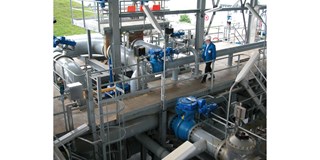Article By Andrew Trill, Flowserve Corporation
___
In this article, you will learn more about how advanced actuators can:
- Improve the reliability of equipment and processes
- Simplify maintenance
- Accelerate commissioning, setup and operation
- Expand data collection and analyses of equipment condition and performance
- Predict when mai
Both the reliability of valves and the integrity of the data collected by advanced actuators depend on better survivability built into the actuator. Long communication and power cables in refineries treatment plants, and mid-stream terminals act as antennas, picking up noise from neighboring equipment or the natural environment. Micro-controllers and other core circuitry can be very vulnerable in these extreme environments. So, when specifying and purchasing advanced actuators, consider equipment engineered to protect their internal components. Outside electrical interference, vibration and extreme temperatures found in harsh conditions all can threaten reliability and integrity. Choose a rugged design that incorporates high-quality materials which:
- Support accurate data collection and retrieval
- Extend actuator service life
- Expand thermal operating ranges
When developing the business case for investment in advanced actuators, consider the total cost of ownership, including expected maintenance expense. Plant operators and maintenance technicians can remove the guesswork and save time because the actuators simplify maintenance by tracking usage and providing real-time and historical feedback of the collected data. That makes it possible to schedule maintenance for valves and the actuators themselves when it’s truly needed, instead of by guesses or interval-led procedures.
Comparing the new data against the initial data collected during commissioning can indicate potential valve issues such as worn seats or seals, debris in the pipeline and cavitation at the valve. Maintenance technicians can respond by physically check the valve to determine whether lubrication is needed or whether components should be repaired or replaced before they fail.
For actuators, sensors, and data collection and analysis capabilities to perform reliably, plant operators will need equipment that can be commissioned and installed correctly by their in-house technicians. Otherwise, operators will become dependent upon the availability of experts from the equipment manufacturer or supplier.
When evaluating which actuators to purchase, be sure to consider whether the models feature:
- A real-time clock that enables data logs to be time-stamped to support asset management functions and lifecycle analysis
- A microcontroller to track sensors and provide wired control networks with access to data; e.g., valve position vs. torque
- Digital relays and switches that can be monitored remotely to alert operators to equipment conditions
- Easy retrieval of data for display and analysis on tablets and other mobile devices as well as on office computers by operations and business teams
About the Author




